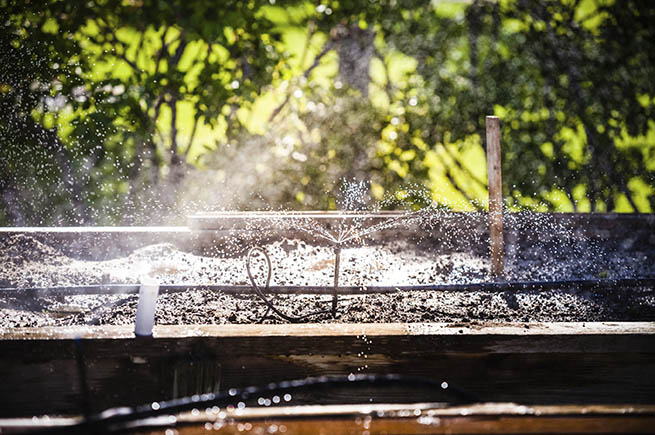Residential Design
7 Tips for Saving Water in Your Landscape
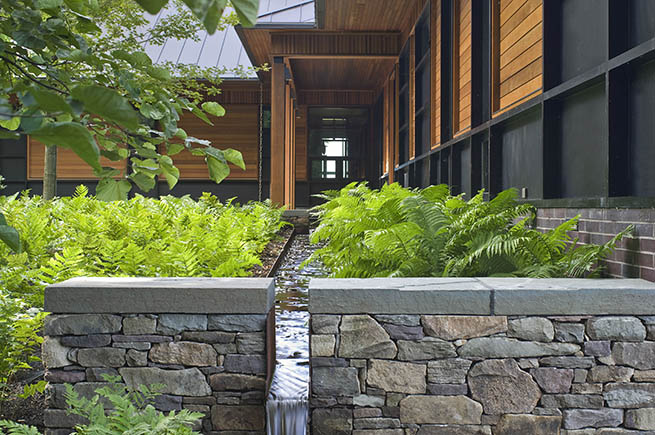
ASLA 2012 Professional Awards,
Residential Design Category, Quaker Smith Point Residence, H. Keith Wagner
Partnership / image: H. Keith Wagner Partnership
Want to create a beautiful landscape for your home that also saves water? Check
out these smart tips that will reduce landscape water use but still leave your
property looking beautiful and alive.
1. Start early. Plan ahead so that all new
plantings take place in the spring. It keeps you out of the summer heat. Plus,
plants require much less water to get situated in the spring than warmer
months.
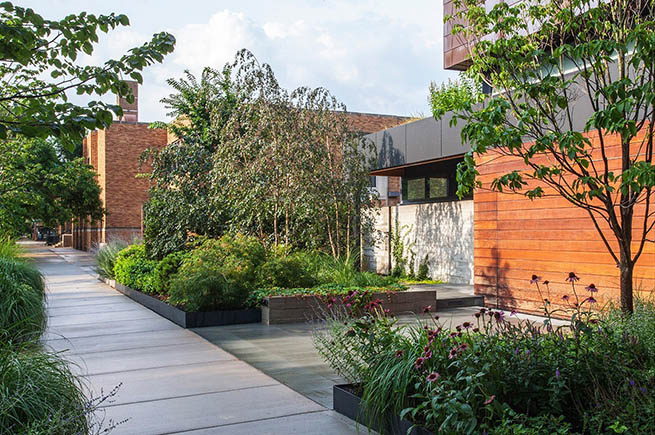 ASLA 2014 Honor Award,
Residential Category, City House in a Garden, McKay Landscape Architects /
image: Linda Oyama Bryan
ASLA 2014 Honor Award,
Residential Category, City House in a Garden, McKay Landscape Architects /
image: Linda Oyama Bryan
2. Go native. When deciding what to
install in your yard, consider native and drought-resistant plants. They typically require less maintenance and little
watering once established (sometimes none at all!)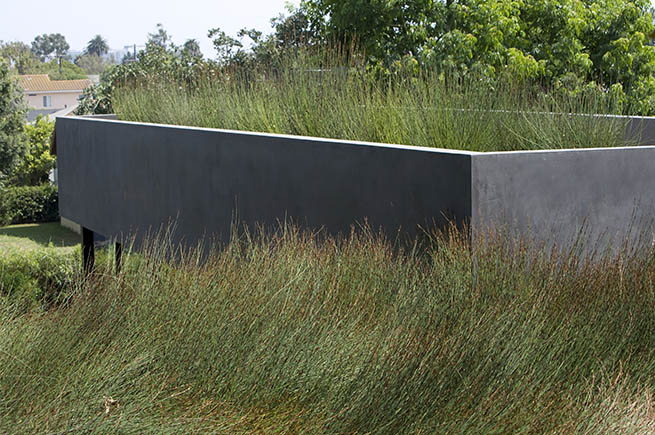 ASLA 2009 Honor Award,
Residential Category, Vienna Way Residence, Marmol Radziner & Associates /
image: Jack Coyier
ASLA 2009 Honor Award,
Residential Category, Vienna Way Residence, Marmol Radziner & Associates /
image: Jack Coyier
3. Add compost and mulch. Use compost when
planting and cover the area with mulch afterwards. Compost helps keep the water
by the plant’s roots and mulch prevents evaporation. Make sure to leave some
space around the base of each plant and resist creating mulch mounds around
plants and trees. ASLA 2014 Award of Excellence,
Residential Category, Woodland Rain Gardens, Jeffrey Carbo Landscape Architects
/ image: Ralph Lee Anderson4. Reduce your lawn. The average American
household uses 320
gallons of water per day, about 30 percent of which is devoted to outdoor
uses. More than half of that outdoor water is used for watering lawns and
gardens. Consider replacing some of that grass with an attractive groundcover that
is drought-resistant, covers a large area, and requires zero mowing.
ASLA 2014 Award of Excellence,
Residential Category, Woodland Rain Gardens, Jeffrey Carbo Landscape Architects
/ image: Ralph Lee Anderson4. Reduce your lawn. The average American
household uses 320
gallons of water per day, about 30 percent of which is devoted to outdoor
uses. More than half of that outdoor water is used for watering lawns and
gardens. Consider replacing some of that grass with an attractive groundcover that
is drought-resistant, covers a large area, and requires zero mowing.
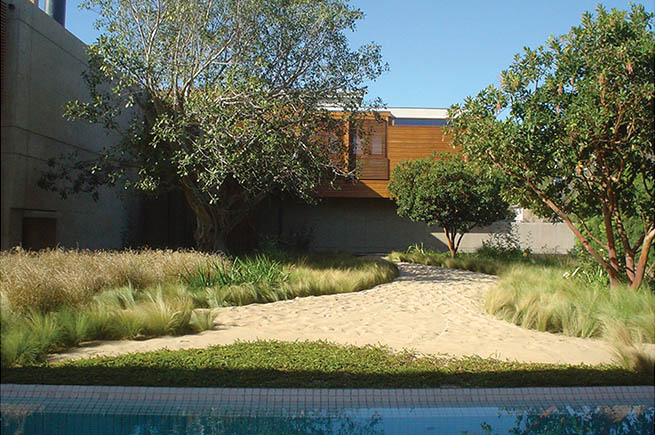 ASLA 2008 Honor Award,
Residential Category, Malibu Beach House, Pamela Burton & Company / image: Bruce
Botnick5. Let it super soak. Up a third of all
water from sprinklers can evaporate during the heat of the day. Instead, give
your plants fewer, heavy soakings. If you must use sprinklers, only use them in
the morning.
ASLA 2008 Honor Award,
Residential Category, Malibu Beach House, Pamela Burton & Company / image: Bruce
Botnick5. Let it super soak. Up a third of all
water from sprinklers can evaporate during the heat of the day. Instead, give
your plants fewer, heavy soakings. If you must use sprinklers, only use them in
the morning.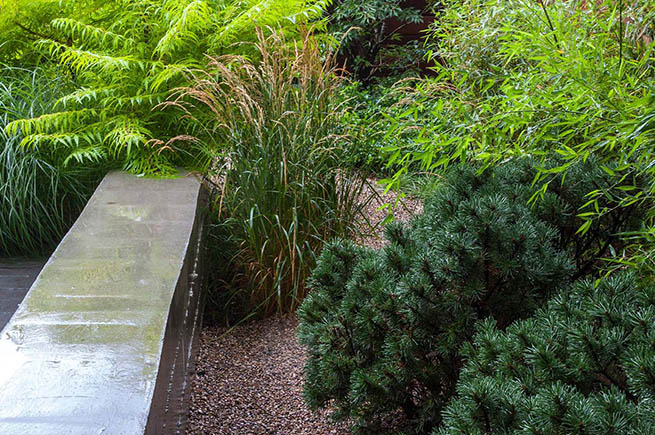 ASLA 2014 Honor Award,
Residential Category, City House in a Garden, McKay Landscape Architects /
image: Linda Oyama Bryan6. Reuse greywater or capture rainwater. Reusing grey water or capturing rainwater offers a free source for landscape irrigation. These systems can be easily installed and even incorporated into irrigation systems.
ASLA 2014 Honor Award,
Residential Category, City House in a Garden, McKay Landscape Architects /
image: Linda Oyama Bryan6. Reuse greywater or capture rainwater. Reusing grey water or capturing rainwater offers a free source for landscape irrigation. These systems can be easily installed and even incorporated into irrigation systems.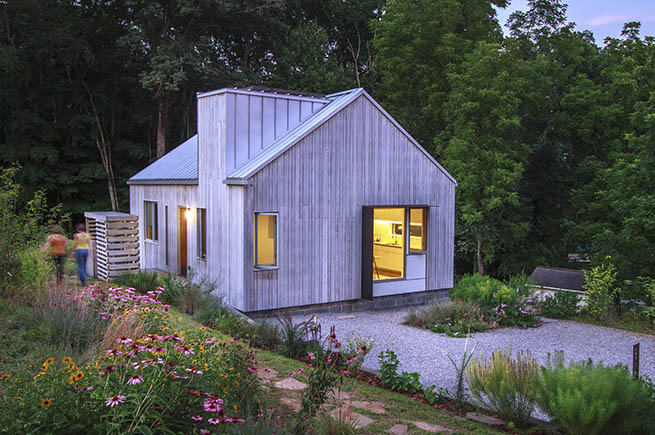
ASLA 2014 Honor Award,
Research Category, A New Norris House and Landscape, University of Tennessee
College of Architecture and Design / image: Robert Batey Photography
7. Set up a drip irrigation system. Drip
irrigation systems water plants right at the root and are an efficient
alternative to sprinkler systems. They use 20 to 50 percent less
water than conventional pop-up sprinkler systems and can save up to 30,000
gallons per year. Be sure to get a timer for maximum effectiveness.
